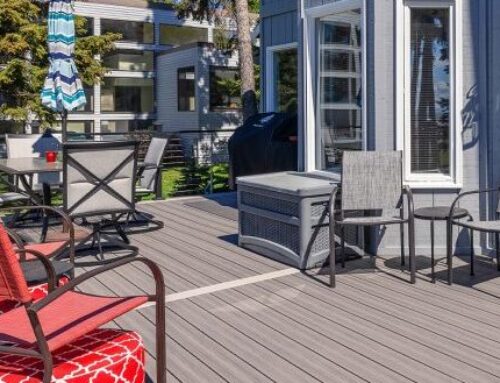March 12, 2012 | Decks are a great “value add” for residents, but property managers face plenty of risks—including having a deck collapse—if their deck isn’t regularly inspected and maintained. It’s happening more frequently than many property managers and homeowners realize. Between 2003 and 2007, the Consumer Product Safety Commission reported 224,740 injuries caused by outdoor decks and porches. “What’s happening across this country is an epidemic at this point,” says Michael Beaudry, executive vice president of the North American Deck and Railing Association (NADRA), adding that “in most cases if a deck fails, it’s a matter of neglect.”
The Ledger Connection
Common deck failures include a stair collapsing or a railing giving way. Of all the parts of a deck, “the most notoriously overlooked has been the ledger connection,” says Glenn Mathewson, a former deck builder and technical advisor to NADRA and International Code Council-certified Master Code Professional. The ledger connection is the board that connects the deck to a home or property, which can rot away, causing the deck to completely collapse. But, adds Mathewson, “poor construction and a lack of standards for construction is a large contributor to the problem.”
Not maintaining and regularly inspecting the deck, especially the ledger, puts your deck at risk for a collapse—and puts your occupants at risk for injury. “The lack of maintenance and the lack of knowledge of poor condition of the materials would be a due-diligence risk,” Mathewson says. “It would be like allowing the paint to peel off a house, but with much more drastic results.”
Is Your Deck Wood or Composite?
That’s why it’s important to know what material was used to build your deck. Newer decks may be made of composite materials, usually a mixture of wood components and plastic, which range in type, density and strength, but are not as strong as wood, Mathewson says. “Imagine the strength of a plastic shopping bag compared to the strength of Tupperware,” Mathewson says. “They’re going to have different strength properties as well as different properties of expansion and contraction.” Composite decking is available in three different series and grades, Boyer says, with the most current known as capstock decking, which combines composites of a plastic and wood fiver core wrapped in an outside vinyl layer (PVC) which keeps water out. Be careful, cautions Mathewson, composite decking may not span as far across joists, the boards that run perpendicular to the house in a deck fame, as the wood decking you wanted to replace. “It’s not a one-for-one trade,” he says.
Know The Code
Codes may be a pain to follow, but if you’re building or remodeling a deck there’s a reason behind using them: safety. Make sure that if you’re interested in building a deck on your property or adding additional decks, you research the building code for your local jurisdiction. It may be your municipality or your state that oversees this. The American Forest & Paper Association has a guide on building decks based on recent building codes and www.deckfailure.com has a variety of white papers and tips on building and maintaining decks.
There are many codes that apply not only to residential property such as single family or town homes, but commercial establishments such as apartment complexes and condos sometimes aren’t always the same. These are key differences for commercial decks:
What To Inspect On A Deck
Deck inspections are a needed service that isn’t being met, but property managers can be proactive about it themselves by having a building professional or home inspector check your deck, Mathewson says. “We’re talking about people’s lives and it does make a difference,” agrees Beaudry.
When inspecting a deck on your property, it’s important to review all the components. Mathewson and Joel Boyer, owner of Unique Deck Builders and Unique Builders, suggest this checklist to inspect your deck:
NADRA also offers a deck evaluation checklist that covers the ledger connection, posts and footing, post-to-beam connections, joists and joist connections, stairs, deck boards and hand rails.
By inspecting your deck regularly and ensuring that it’s up to standards can help you keep residents and guests safe on a deck. “The bottom line for property managers,” Beaudry says, “is that they need to be proactive rather than reactive.”
*Note: This content is for informational purposes only. Lowe’s makes no warranties and bears no liability for use of this information. The information is not intended, and should not be construed, as legal, tax or investment advice, or a legal opinion. Always contact your legal, tax and/or financial advisors to help answer questions about your business’s specific situation or needs prior to taking any action based upon this information.



